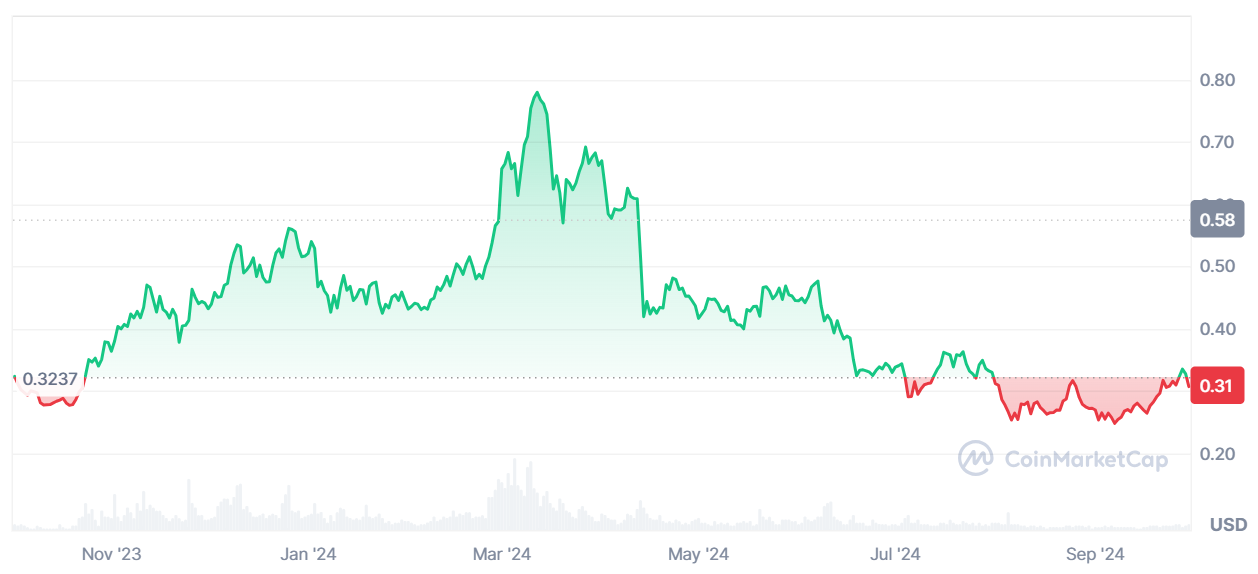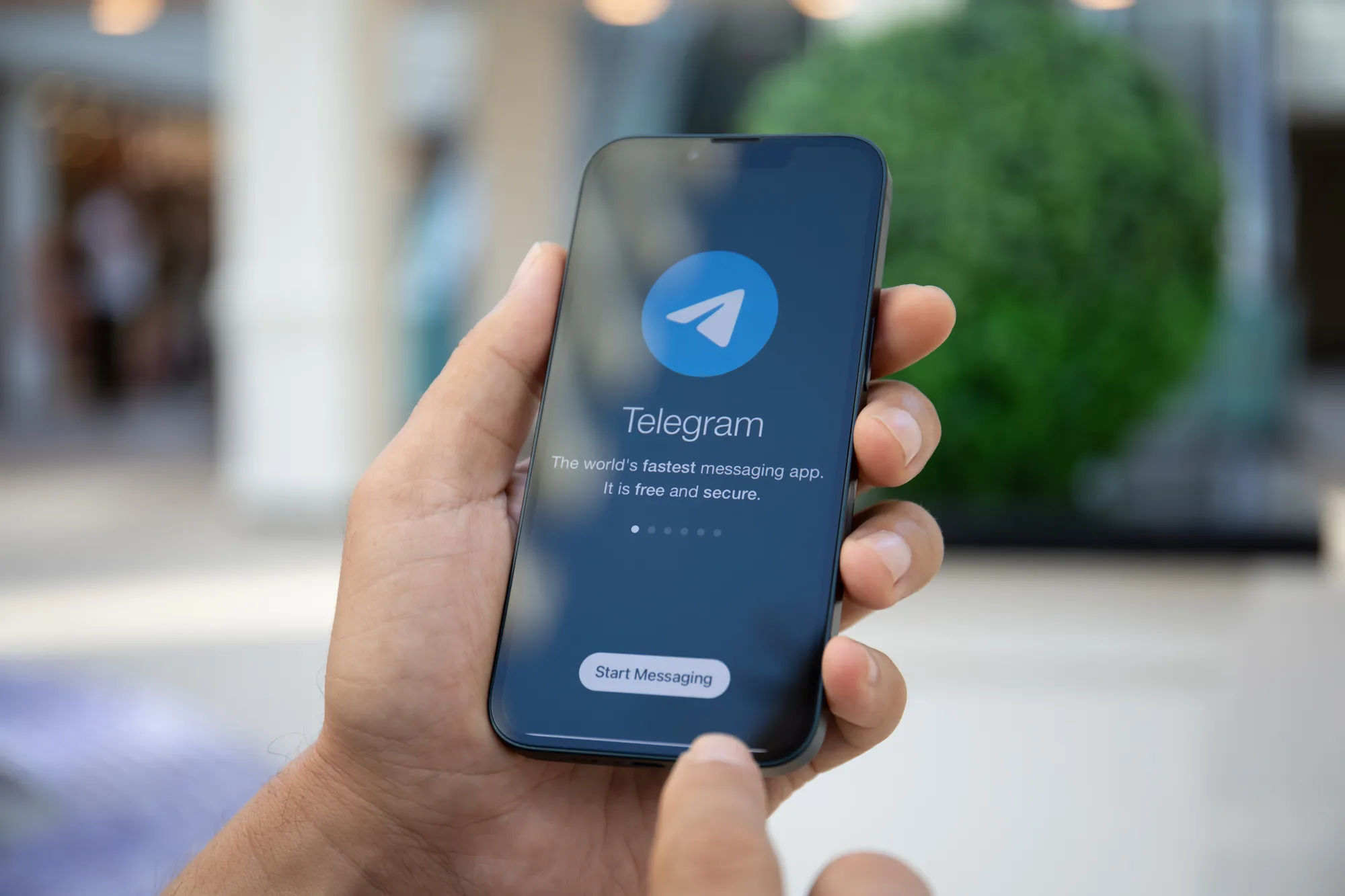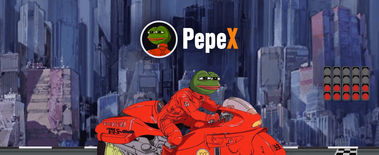Gaming has always been seen as one of blockchain technology’s most important use cases.
According to Markets and Markets, the blockchain gaming revenue was valued at $4.6 billion in 2022, and it would jump to $65.7 billion by 2027.
Gaming is still a big industry, with all gaming tokens being valued at over $18 billion. Gala, Axie Infinity, and The Sandbox are some of the most notable blockchain gaming tokens.
The gaming industry was initially dominated by the likes of Axie Infinity, Decentraland, and The Sandbox, which had hundreds of thousands of users.
However, their popularity has waned, and their tokens have crashed. Axie Infinity’s market cap has dropped from over $8 billion to $777 million, while Decentraland’s valuation has fallen from $9 billion to $578 million.

Decentraland price YTD.
Telegram is changing the gaming industry
Traditional gaming platforms like Axie and Decentraland had a big challenge in requiring people to use their laptops and web browsers.
Users also had first to create a Web3 wallet to access these platforms, which was a relatively complicated undertaking to most people.
Telegram, one of the biggest social media networks with over 900 million users, has changed the blockchain gaming industry.
The company launched two products that have taken them mainstream: mini-app development and the TON Blockchain network.
Its mini app development platform enables creators to create apps that are housed in its platform. As such, users don’t need to download and install the game.
The TON Blockchain is a layer-1 network that enables developers to create applications that are secured by smart contracts. Its key benefits are that it has limited transaction costs and that it is directly linked in Telegram.
Growth of Telegram’s gaming industry
Telegram has become the biggest social media platform for the blockchain gaming industry. It hosts at least 35 games and 113 tap-to-earn platforms.
Hamster Kombat, the biggest game in the network, has over 300 million users, while TapSwap has over 70 million. Other popular players like Blum, Dogs, and Notcoin have more than 60 million, 50 million, and 45 million users, respectively.
In tap-to-earn, users accumulate tokens by just tapping a button and doing simple things like following the developers’ social media networks.
Telegram also has games that let users accumulate tokens by completing tasks. Gamee has over 100 million users, while Catizen, GOATS, Lost Dogs, 1win Token, and NOTAI have over 300 million account holders.
Some of these games have become multi-million dollar companies, with Notcoin having a market cap of almost $900 million. Hamster Kombat is valued at over $300 million while Catizen has a fully diluted market cap of $175 million.

Notcoin price over the last 30 days.
Telegram has a huge appeal to developers in the gaming industry because of its unique features.
First, it has a massive user base, with the most recent data showing that it has over 900 million users globally. These users love it for its strong encryption features, multi-device usage, and the ability to send large files within seconds. Also, unlike other social media networks, Telegram has limited content moderation.
Telegram’s big user base means that developers can scale their games without incurring a lot of costs.
Secondly, developers love Telegram because of its integration with the TON Blockchain, one of the biggest layer-1 networks in the industry. As a smart contract platform, TON ensures that most processes are automated and transparent, and transactions are secure.
Third, Telegram is loved because of the ability for developers to build and deploy mini apps within a few days. It is a cost-efficient process than launching games on Android, iOS, and consoles.
Summary
Telegram has solved many of the challenges that most developers face when building their games. Apple charges an annual fee of $99 to host apps on its app stores and Google charges a one-time fee. However, the two companies also charge transaction fees, which can be as much as 30% of the total cost.
Additionally, developers pay thousands of dollars for hosting services, often to Microsoft, Google, and Amazon.
With Telegram, the cost of building these games is negligible and it is relatively easier to scale them by leveraging its available users. For example, Hamster Kombat gained over 300 million, while TapSwap gained over 70 million users within less than six months.
Most importantly, developers can monetize their games through airdrops, which are hugely popular amongst crypto traders. It is estimated that Notcoin’s developers made hundreds of millions of dollars when they launched the airdrop earlier this year.
As more people flock to the popular social media app each day, Telegram games have the potential to reach the same popularity as traditional mobile games.
Telegram Gaming will shape the future of web3 by lowering the barrier to entry for game developers. This in turn will attract more players to the blockchain space, helping to elevate the mass adoption of web3 technologies.













